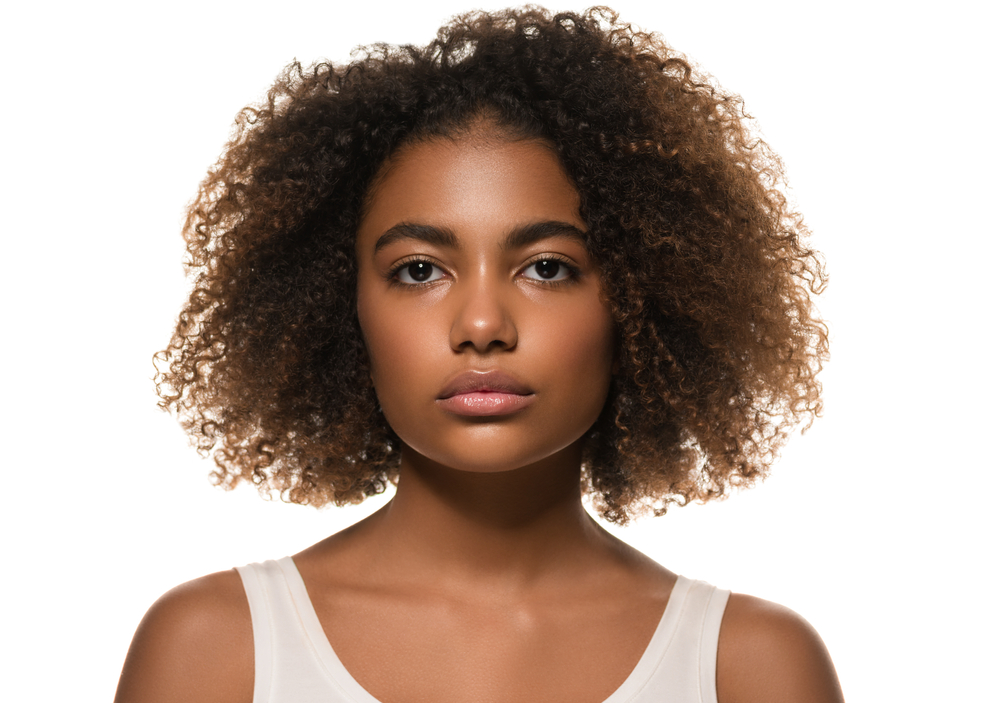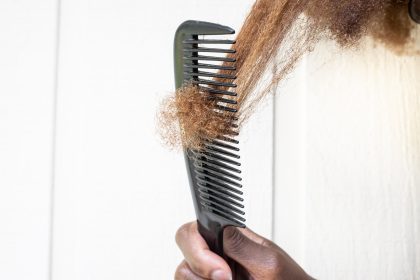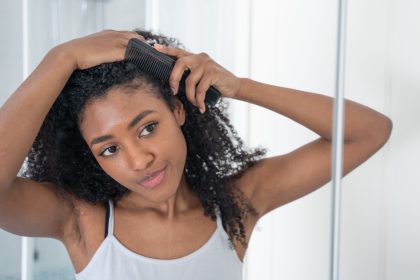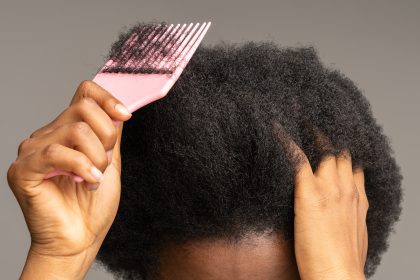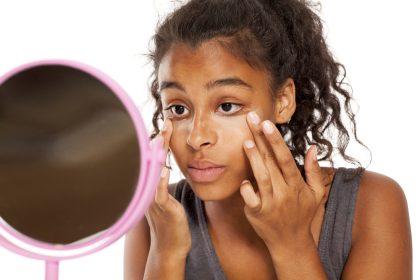The endless search for perfect hair products often overlooks the most fundamental truth about hair health—it begins from within. While quality shampoos and conditioners serve important purposes, they can only address the symptoms of poor hair health rather than the underlying causes.
Hair strands consist primarily of protein surrounded by protective lipid layers. When nutritional deficiencies occur, the body prioritizes essential functions over hair production, leading to weakened strands susceptible to breakage, dullness, and thinning. This biological reality explains why even the most expensive hair treatments sometimes fail to deliver lasting results.
Key nutrients including biotin, zinc, vitamins A and C, iron, and omega-3 fatty acids play critical roles in maintaining vibrant, strong hair. These nutrients support hormone balance, oil production, and the structural integrity of hair follicles—all factors that determine hair appearance and growth.
Addressing hair concerns through diet offers advantages beyond improved appearance. The same nutrients that benefit hair also support skin health, nail strength, and overall wellbeing. This holistic approach creates comprehensive benefits that external treatments simply cannot match.
For those experiencing persistent hair problems, examining dietary habits often reveals surprising nutritional gaps. By incorporating specific nutrient-dense foods regularly, many people observe significant improvements in hair texture, shine, and growth within two to three months—the time required for new, healthier hair to emerge.
Eggs deliver biotin for strength and elasticity
The humble egg consistently ranks among the most powerful foods for hair health due to its exceptional biotin content. This B-vitamin, sometimes called vitamin H, plays a crucial role in keratin infrastructure—the protein that forms hair’s basic structure.
When biotin levels drop below optimal levels, hair becomes noticeably more brittle and prone to breakage. The deterioration occurs because biotin directly influences how effectively the body produces keratin. Without sufficient biotin, keratin structure weakens, resulting in fragile strands that snap easily during brushing or styling.
Beyond structural support, biotin contributes to scalp health by regulating oil production. This dual action helps maintain the delicate balance between too much oil, which creates limp, greasy hair, and too little, which leads to dryness and breakage.
One large egg provides approximately 10 micrograms of biotin—about one-third of the daily recommended intake. The nutrient concentrates primarily in the yolk, making whole eggs significantly more beneficial for hair health than egg whites alone.
For maximum hair benefits, aim to incorporate eggs into your diet several times weekly. Their versatility makes this goal relatively easy, whether as breakfast staples, salad toppers, or ingredients in baked goods. Those concerned about cholesterol can rest assured that modern nutritional science has largely debunked previous concerns about egg consumption for most individuals.
Other biotin-rich foods that support this system include almonds, peanuts, wheat bran, salmon, low-fat cheese, and avocados. Rotating these options throughout your weekly meal plan ensures consistent biotin intake to support ongoing hair health.
Oysters provide zinc for hormone balance
Oysters contain the highest concentration of zinc found in any food source, making them exceptional for combating hormone-related hair issues. This mineral directly influences hormonal balance, particularly in relation to DHT (dihydrotestosterone)—a hormone linked to hair thinning and loss in both men and women.
The relationship between zinc and hair health extends beyond hormonal regulation. This mineral also supports cell division—the process crucial for hair growth—and helps maintain the oil-secreting glands attached to hair follicles. These glands produce sebum, the natural conditioning agent that protects hair and prevents excessive dryness.
Research indicates that zinc deficiency correlates strongly with three common hair problems: slow growth, excessive shedding, and dandruff. Many individuals experiencing these issues show measurable improvement when increasing their zinc intake to optimal levels through diet.
While oysters provide the most concentrated source, not everyone enjoys their distinctive taste or texture. Alternative zinc-rich foods include crab, clams, grass-fed beef, pumpkin seeds, and wheat germ. Incorporating several of these options weekly helps maintain zinc levels that support robust hair growth.
Vegetarians and vegans may find maintaining optimal zinc levels more challenging, as plant sources contain compounds that can reduce zinc absorption. For these individuals, combining zinc-rich plant foods with vitamin C sources enhances absorption and helps overcome this limitation.
For optimal hair benefits, aim to consume zinc-rich foods several times weekly. The mineral works gradually to improve follicle function, with visible results typically emerging after one to two months of consistent intake.
Dark green vegetables supply vitamins A and C
Leafy greens like spinach, broccoli, and Swiss chard deliver a powerful combination of vitamins A and C—nutrients that work synergistically to maintain healthy hair through multiple pathways. This nutrient duo supports sebum production, the natural oil that works as your body’s built-in conditioner.
Vitamin A influences the rate at which skin cells, including those on the scalp, regenerate. Optimal levels keep the scalp healthy and flake-free by preventing the buildup of dead cells that can block follicles and impede growth. When vitamin A intake falls below ideal levels, the scalp becomes noticeably drier, often leading to itchiness and dandruff.
Meanwhile, vitamin C plays a critical role in collagen production—a protein that strengthens hair and prevents breakage. This vitamin also enhances iron absorption, another mineral essential for hair growth. Additionally, vitamin C’s powerful antioxidant properties protect hair follicles from damage caused by free radicals, which can contribute to premature graying and thinning.
The combination of these vitamins creates a foundation for follicle health that commercial treatments cannot replicate. The benefits extend beyond the follicle to the hair shaft itself, resulting in strands that appear shinier and more resilient to environmental stressors.
For maximum benefit, dark green vegetables should become daily dietary staples rather than occasional additions. Aim for at least one cup of these nutrient powerhouses daily, whether incorporated into salads, smoothies, or cooked dishes. The consistent supply of vitamins A and C creates the steady nutritional environment hair follicles need to produce their strongest possible growth.
Those who struggle to consume sufficient quantities of leafy greens might consider starting their day with a nutrient-dense smoothie containing spinach or kale—the sweet flavors of fruit effectively mask the vegetable taste while delivering the full spectrum of hair-supporting nutrients.
Lean red meat prevents iron deficiency
Iron deficiency ranks among the most common nutritional causes of hair loss, particularly in women. This mineral plays a crucial role in delivering oxygen to hair follicles—a process necessary for healthy growth cycles. When iron levels drop too low, the body prioritizes essential organs over hair production, leading to noticeable thinning.
Lean red meat provides heme iron—the form most readily absorbed and utilized by the body. This bioavailable iron helps maintain the optimal environment for follicle function, supporting both the growth rate and thickness of hair strands. Even mild iron deficiency can disrupt this process before other symptoms become apparent.
Research consistently demonstrates the connection between iron status and hair health. Studies show that individuals with hair loss often show improved growth when iron levels return to normal ranges. This relationship appears particularly strong in cases of diffuse thinning—hair loss distributed evenly across the scalp rather than in specific patterns.
While red meat provides the most efficient source of iron, not everyone chooses to include it in their diet. Alternative sources include turkey, egg yolks, lentils, spinach, and fortified cereals. However, plant sources contain non-heme iron, which the body absorbs less efficiently. Combining these foods with vitamin C sources enhances absorption significantly.
For those including red meat in their diet, two to three servings weekly generally provide sufficient iron to support hair health. Those relying on plant sources may need daily consumption of iron-rich options to achieve comparable benefits. Women with heavy menstrual cycles often require higher intake due to regular iron loss.
The connection between iron and hair health demonstrates how internal nutritional status directly influences external appearance. Addressing this fundamental need often resolves persistent hair thinning that resists topical treatments and styling products.
Sweet potatoes deliver beta-carotene for scalp health
Sweet potatoes contain exceptional levels of beta-carotene—a precursor to vitamin A that plays a vital role in scalp health and hair vitality. This nutrient helps protective cells create an effective barrier against environmental damage while regulating oil production to maintain optimal moisture balance.
The conversion of beta-carotene to vitamin A supports sebum production—the natural conditioning agent that keeps hair lustrous and prevents excessive dryness. When vitamin A levels fall below optimal ranges, the scalp becomes noticeably drier, often leading to flaking, itchiness, and dull-looking hair.
Beyond moisture regulation, vitamin A influences the growth cycle of hair follicles. Adequate levels support faster growth rates and help follicles remain in the growth phase longer before entering the resting and shedding phases. This extended growth phase creates the opportunity for longer, stronger hair development.
The bright orange color of sweet potatoes signals their high carotenoid content—compounds that provide antioxidant protection to the scalp and follicles. These antioxidants help neutralize free radicals that would otherwise damage cellular components necessary for healthy hair production.
Other excellent sources of beta-carotene include carrots, pumpkin, butternut squash, kale, and red peppers. Rotating these colorful vegetables throughout your weekly meal plan ensures consistent vitamin A support for ongoing scalp and hair health.
For maximum benefit, consume these foods with a small amount of healthy fat, which enhances carotenoid absorption. Simple pairings like roasted sweet potatoes drizzled with olive oil or carrots with avocado optimize nutrient availability and support the conversion process from beta-carotene to active vitamin A.
Fatty fish supplies omega-3s for moisture and shine
Fatty fish like salmon, sardines, and mackerel deliver concentrated amounts of omega-3 fatty acids—essential fats that the body cannot produce independently. These specific fats serve critical functions in maintaining the health of both hair follicles and the scalp environment they depend on.
Omega-3 fatty acids help regulate oil production in the scalp, creating the proper balance necessary for moisturized yet not greasy hair. When these fats remain consistently available through diet, they help maintain the hydration barrier that prevents moisture loss from individual strands, resulting in hair that appears shinier and feels more supple.
Beyond their moisturizing properties, omega-3s possess natural anti-inflammatory capabilities that benefit the scalp. Chronic inflammation can disrupt normal follicle function, leading to increased shedding and slower growth. By moderating this inflammatory response, omega-3s help create the optimal environment for consistent hair production.
Research shows that these essential fats also influence the proteins that determine hair structure. Adequate omega-3 levels support the production of stronger keratin formations, resulting in strands less prone to breakage and splitting. This structural benefit becomes particularly important for those with naturally fine or fragile hair types.
For individuals who don’t consume fish, plant-based omega-3 sources include flaxseeds, chia seeds, and walnuts. However, these provide a different form of omega-3 (ALA) that requires conversion to the most active forms (EPA and DHA). This conversion happens inefficiently in most people, making regular consumption of these foods even more important for non-fish eaters.
The benefits of omega-3s extend well beyond hair health to support brain function, heart health, and reduced inflammation throughout the body. This makes fatty fish or plant alternatives valuable additions to any diet, with the visible hair improvements serving as external evidence of internal nutritional optimization.
Creating your hair-healthy eating plan
Transforming hair health through nutrition requires consistency rather than occasional consumption of beneficial foods. Creating a practical eating plan that incorporates these key nutrients regularly yields the most noticeable improvements in hair appearance and growth.
Start by evaluating your current diet for potential nutritional gaps. Those experiencing dry, brittle hair often show insufficient intake of biotin and omega-3s. Thinning hair frequently correlates with inadequate iron or zinc. Dull hair with scalp flaking typically suggests vitamin A deficiency. Identifying your specific symptoms helps prioritize which nutrients deserve particular attention.
Aim to include at least one serving from each of the six food categories daily, rotating specific choices to ensure variety. A practical approach might include eggs at breakfast, a spinach salad with pumpkin seeds at lunch, and salmon with sweet potatoes at dinner—providing comprehensive hair nutrition throughout the day.
Meal preparation simplifies maintaining this nutrition plan. Consider batch-cooking foods like hard-boiled eggs, roasted sweet potatoes, and salmon portions to have hair-healthy options readily available even during busy days. This preparation reduces the likelihood of nutritional gaps that might otherwise occur during hectic periods.
Staying adequately hydrated complements these nutritional strategies by ensuring proper blood circulation to the scalp. Water helps transport nutrients to follicles and remove waste products that might otherwise impede healthy function. Aim for at least eight glasses daily to support this process.
Patience remains essential when addressing hair concerns through nutrition. Hair grows approximately half an inch monthly, meaning that new growth reflecting improved nutrition takes time to become visible. Most people notice meaningful improvements within three months of consistent dietary changes, with continued enhancement over the following months.
While external treatments like conditioners and masks serve valuable purposes in protecting existing hair, combining these approaches with internal nutritional support creates the most dramatic improvements in overall hair health, appearance, and growth. This inside-out strategy addresses both symptoms and underlying causes, creating sustainable results that purely topical approaches cannot achieve alone.

